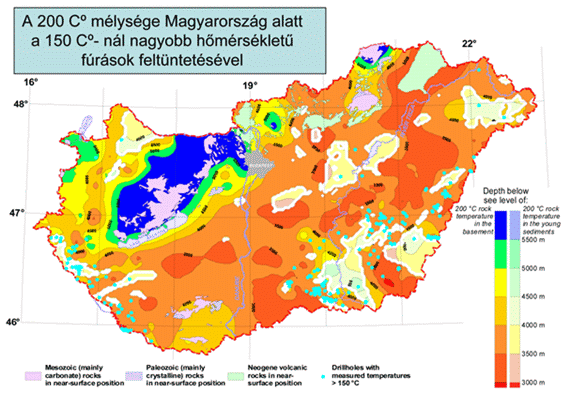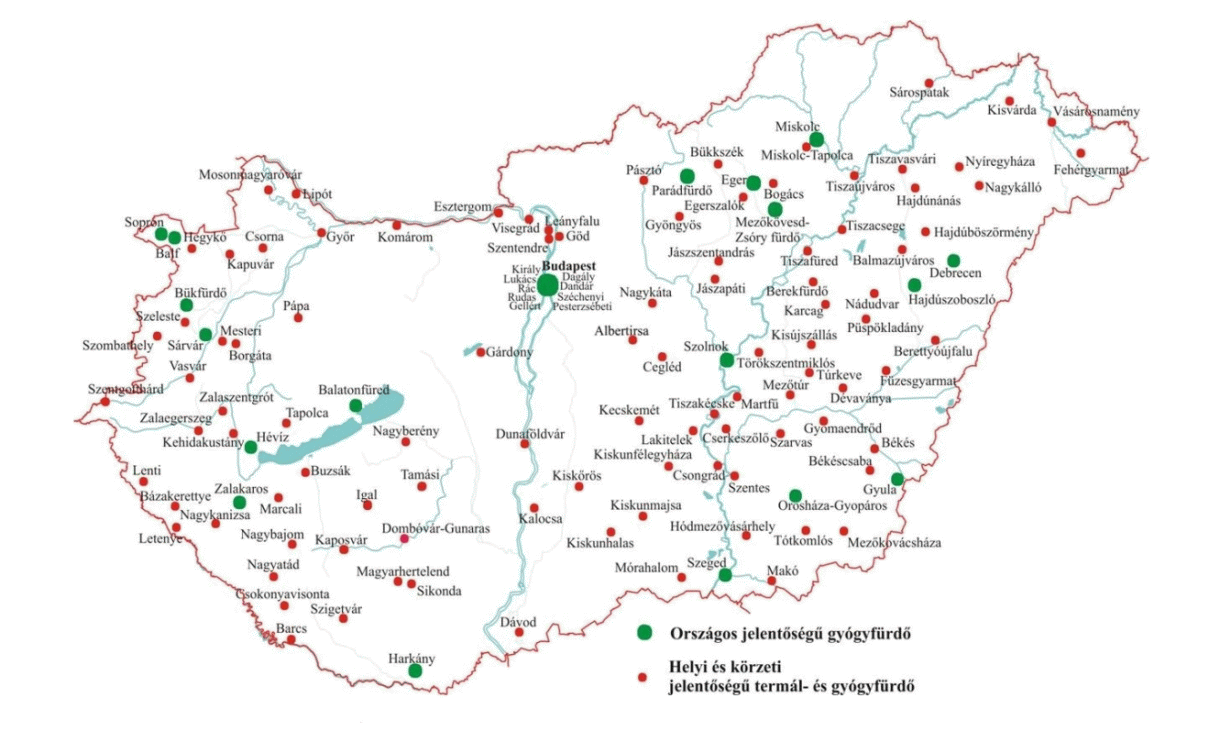Geothermal characteristics
In the Earth’s underground belts the decay of radioactive isotopes (e.g. radium, uranium, torium) produces heat, and its flow towards the earth is called geothermal (earth’s heat) energy. The flow of heat going through a certain surface in a definite unit of time is called heat flux density unit.(W/m2). The average value in Hungary is high (90,4 mW/m2), one and a half times higher than the European average (2).
A Geothermal gradient is the rate of increasing temperature with respect to increasing depth in the Earth's interior. (°C/100 m) Its value in Hungary is 5-8 ºC, meaning, that when approaching the centre of the earth the temperature rises by 5-8 ºC every 100 metres. This value is 2-2.5 times higher than the world average. The value of the gradient is the highest in the Great Plain region and in Southern Transdanubia while it is the lowest in Hungary’s mountainous regions. The same tendency can be experienced when we intend to find a place with given temperature underground. (e.g. 200°C) (Figure 3).

Figure 3: The depth and the consolidation of a 200 oC isothermic surface. Source: Horváth J. 2011.
Thermal waters can be found at 70 % of the country’s area. (1.) The high undeground temperature in itself would not be enough for the for the thermal waters to occur. Underground reservoirs and other conditions, including unique rock formations, are also needed. The geological development of the Carpathian Basin created unique conditions for the occurrence of thermal waters: practically there are no regions in Hungary without proper conditions for the thermal water to occur. These waters can be brought to the surface by drilling.
Three fourths of Hungary’s thermal water sources producing water with a temperature higher than 30 °C can be found in the country’s Great Plain region. Approximately 200 thermal baths can be found here, many of which can boast radioactive sulfuric-acid, salty-bromic, iodine waters with medicinal proportions. (3). The best known baths are located along the Buda fault line, including the following baths: Gellért-, Rudas-, Lukács-baths, Bükfürdő, Sárvár, Hévíz, Harkány, Zalakaros, Hajdúszoboszló, Gyula. Budapest is the only big city in the world with several hundred thermal springs and wells and more than fifty baths. (Figure 4).

Figure 4: Hungary’s thermal and medicinal baths. Source: OES 2007.